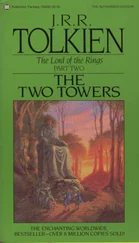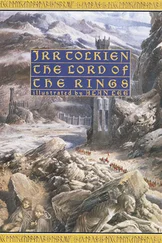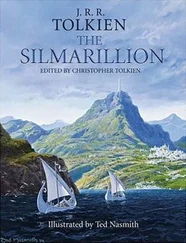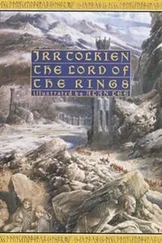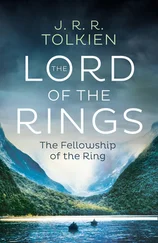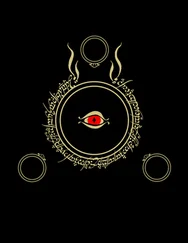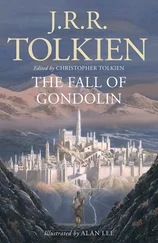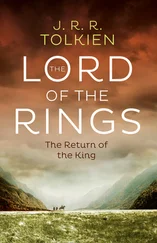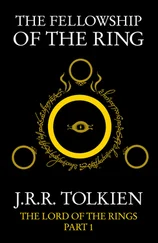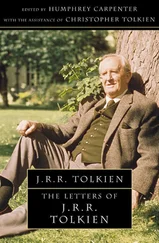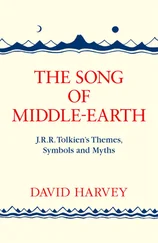As the stories become less mythical, and more like stories and romances, Men are interwoven. For the most part these are ‘good Men’ – families and their chiefs who rejecting the service of Evil, and hearing rumours of the Gods of the West and the High Elves, flee westward and come into contact with the Exiled Elves in the midst of their war. The Men who appear are mainly those of the Three Houses of the Fathers of Men, whose chieftains become allies of the Elflords. The contact of Men and Elves already fore-shadows the history of the later Ages, and a recurrent theme is the idea that in Men (as they now are) there is a strand of ‘blood’ and inheritance, derived from the Elves, and that the art and poetry of Men is largely dependent on it, or modified by it. [5] Of course in reality this only means that my ‘elves’ are only a representation or an apprehension of a part of human nature, but that is not the legendary mode of talking.
There are thus two marriages of mortal and elf – both later coalescing in the kindred of Eärendil, represented by Elrond the Half-elven who appears in all the stories, even The Hobbit . The chief of the stories of The Silmarillion , and the one most fully treated is the Story of Beren and Lúthien the Elfmaiden . Here we meet, among other things, the first example of the motive (to become dominant in Hobbits) that the great policies of world history, ‘the wheels of the world’, are often turned not by the Lords and Governors, even gods, but by the seemingly unknown and weak – owing to the secret life in creation, and the part unknowable to all wisdom but One, that resides in the intrusions of the Children of God into the Drama. It is Beren the outlawed mortal who succeeds (with the help of Lúthien, a mere maiden even if an elf of royalty) where all the armies and warriors have failed: he penetrates the stronghold of the Enemy and wrests one of the Silmarilli from the Iron Crown. Thus he wins the hand of Lúthien and the first marriage of mortal and immortal is achieved.
As such the story is (I think a beautiful and powerful) heroic-fairy-romance, receivable in itself with only a very general vague knowledge of the background. But it is also a fundamental link in the cycle, deprived of its full significance out of its place therein. For the capture of the Silmaril, a supreme victory, leads to disaster. The oath of the sons of Fëanor becomes operative, and lust for the Silmaril brings all the kingdoms of the Elves to ruin.
There are other stories almost equally full in treatment, and equally independent and yet linked to the general history. There is the Children of Húrin , the tragic tale of Túrin Turambar and his sister Níniel – of which Túrin is the hero: a figure that might be said (by people who like that sort of thing, though it is not very useful) to be derived from elements in Sigurd the Volsung, Oedipus, and the Finnish Kullervo. There is the Fall of Gondolin : the chief Elvish stronghold. And the tale, or tales, of Eärendil the Wanderer . He is important as the person who brings the Silmarillion to its end, and as providing in his offspring the main links to and persons in the tales of later Ages. His function, as a representative of both Kindreds, Elves and Men, is to find a sea-passage back to the Land of the Gods, and as ambassador persuade them to take thought again for the Exiles, to pity them, and rescue them from the Enemy. His wife Elwing descends from Lúthien and still possesses the Silmaril. But the curse still works, and Eärendil’s home is destroyed by the sons of Fëanor. But this provides the solution: Elwing casting herself into the Sea to save the Jewel comes to Eärendil, and with the power of the great Gem they pass at last to Valinor, and accomplish their errand – at the cost of never being allowed to return or dwell again with Elves or Men. The gods then move again, and great power comes out of the West, and the Stronghold of the Enemy is destroyed; and he himself [is] thrust out of the World into the Void, never to reappear there in incarnate form again. The remaining two Silmarils are regained from the Iron Crown – only to be lost. The last two sons of Fëanor, compelled by their oath, steal them, and are destroyed by them, casting themselves into the sea, and the pits of the earth. The ship of Eärendil adorned with the last Silmaril is set in heaven as the brightest star. So ends The Silmarillion and the tales of the First Age.
The next cycle deals (or would deal) with the Second Age. But it is on Earth a dark age, and not very much of its history is (or need be) told. In the great battles against the First Enemy the lands were broken and ruined, and the West of Middle-earth became desolate. We learn that the Exiled Elves were, if not commanded, at least sternly counselled to return into the West, and there be at peace. They were not to dwell permanently in Valinor again, but in the Lonely Isle of Eressëa within sight of the Blessed Realm. The Men of the Three Houses were rewarded for their valour and faithful alliance, by being allowed to dwell ‘westernmost of all mortals’, in the great ‘Atlantis’ isle of Númenóre . The doom or gift of God, of mortality, the gods of course cannot abrogate, but the Númenóreans have a great span of life. They set sail and leave Middle-earth, and establish a great kingdom of mariners just within furthest sight of Eressëa (but not of Valinor). Most of the High Elves depart also back into the West. Not all. Some men akin to the Númenóreans remain in the land not far from the shores of the Sea. Some of the Exiles will not return, or delay their return (for the way west is ever open to the immortals and in the Grey Havens ships are ever ready to sail away for ever). Also the Orcs (goblins) and other monsters bred by the First Enemy are not wholly destroyed. And there is Sauron . In the Silmarillion and Tales of the First Age Sauron was a being of Valinor perverted to the service of the Enemy and becoming his chief captain and servant. He repents in fear when the First Enemy is utterly defeated, but in the end does not do as was commanded, return to the judgement of the gods. He lingers in Middle-earth. Very slowly, beginning with fair motives: the reorganising and rehabilitation of the ruin of Middle-earth, ‘neglected by the gods’, he becomes a re-incarnation of Evil, and a thing lusting for Complete Power – and so consumed ever more fiercely with hate (especially of gods and Elves). All through the twilight of the Second Age the Shadow is growing in the East of Middle-earth, spreading its sway more and more over Men – who multiply as the Elves begin to fade. The three main themes are thus The Delaying Elves that lingered in Middle-earth; Sauron’s growth to a new Dark Lord, master and god of Men; and Númenor-Atlantis. They are dealt with annalistically, and in two Tales or Accounts, The Rings of Power and the Downfall of Númenor . Both are the essential background to The Hobbit and its sequel.
In the first we see a sort of second fall or at least ‘error’ of the Elves. There was nothing wrong essentially in their lingering against counsel, still sadly with [6] Some words of the original manuscript were omitted by the typist in this sentence.
the mortal lands of their old heroic deeds. But they wanted to have their cake without eating it. They wanted the peace and bliss and perfect memory of ‘The West’, and yet to remain on the ordinary earth where their prestige as the highest people, above wild Elves, dwarves, and Men, was greater than at the bottom of the hierarchy of Valinor. They thus became obsessed with ‘fading’, the mode in which the changes of time (the law of the world under the sun) was perceived by them. They became sad, and their art (shall we say) antiquarian, and their efforts all really a kind of embalming – even though they also retained the old motive of their kind, the adornment of earth, and the healing of its hurts. We hear of a lingering kingdom, in the extreme North-west more or less in what was left in the old lands of The Silmarillion , under Gilgalad; and of other settlements, such as Imladris (Rivendell) near Elrond; and a great one at Eregion at the Western feet of the Misty Mountains, adjacent to the Mines of Moria, the major realm of the Dwarves in the Second Age. There arose a friendship between the usually hostile folk (of Elves and Dwarves) for the first and only time, and smithcraft reached its highest development. But many of the Elves listened to Sauron. He was still fair in that early time, and his motives and those of the Elves seemed to go partly together: the healing of the desolate lands. Sauron found their weak point in suggesting that, helping one another, they could make Western Middle-earth as beautiful as Valinor. It was really a veiled attack on the gods, an incitement to try and make a separate independent paradise. Gilgalad repulsed all such overtures, as also did Elrond. But at Eregion great work began – and the Elves came their nearest to falling to ‘magic’ and machinery. With the aid of Sauron’s lore they made Rings of Power (‘power’ is an ominous and sinister word in all these tales, except as applied to the gods).
Читать дальше


